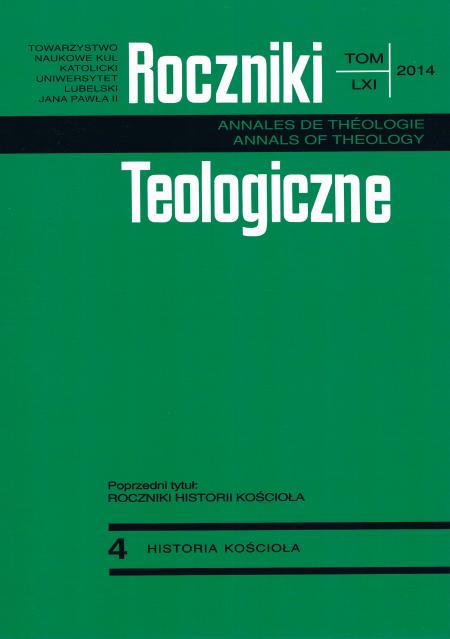Potencjał archidiecezji poznańskiej po zakończeniu kulturkampfu w świetle Brevis descriptio historico-geographica ecclesiarum archidioecesis /.../
The Potential of the Archdiocese of Poznan after the End of Kulturkampf. As Depicted in Brevis descriptio historico-geographica ecclesiarum /.../
Author(s): Ałła KrawczukSubject(s): History
Published by: Towarzystwo Naukowe KUL & Katolicki Uniwersytet Lubelski Jana Pawła II
Keywords: Archdiocese of Poznan´; pastoral duties; organization of the Catholic Church; Kulturkampf
Summary/Abstract: Brevis descriptio historico-geographica ecclesiarum archidioecesis gnesnensis et posnaniensis by Jan Korytkowski still remains a valuable resource for research in the organization and the estate structure of the oldest Polish dioceses of Gniezno and Poznań at the time when the Kulturkampf came to an end. The value of Korytkowski’s work lies in the fact that it is not confined to basic data of the sort available from ecclesiastical schematisms. Instead, the work also presents short histories of each parish and with its church, schools, orphanages and ecclesiastical fraternities. Moreover, it lists villages and towns that territorially belonged to each parish. Thanks to the data in Brevis descriptio it can be precisely ascertained that that in 1888, the Archdiocese of Poznan´ comprised 24 deaneries, 342 parishes, 103 filial churches, 31 altarages, 71 oratories and public chapels, 858 parish schools and 99 hospitals. The Archdiocese gathered 761,939 Catholics. Pastoral and central offices were occupied by 394 priests. The analysis of the data included in the schematism allows our deeper insight into the general conditions on the functioning of the Archdiocese of Poznan´. Despite the demise of the Kulturkampf, the diocese suffered from considerable degree of interference of the Prussian government with the matters of the Church when the seat was occupied by Archbishop Julius Dinder. The Prussians wanted to interfere with the processes of educating the ministers, filling the Church offices and governing the Church estate.
Journal: Roczniki Teologiczne
- Issue Year: 61/2014
- Issue No: 04
- Page Range: 91-127
- Page Count: 37
- Language: Polish

